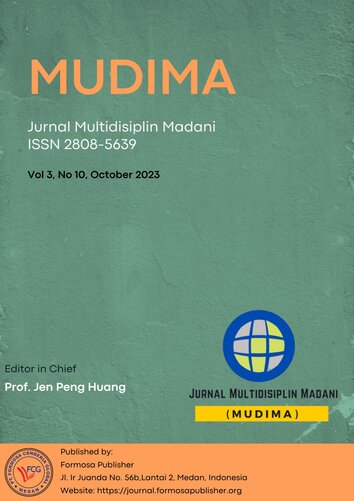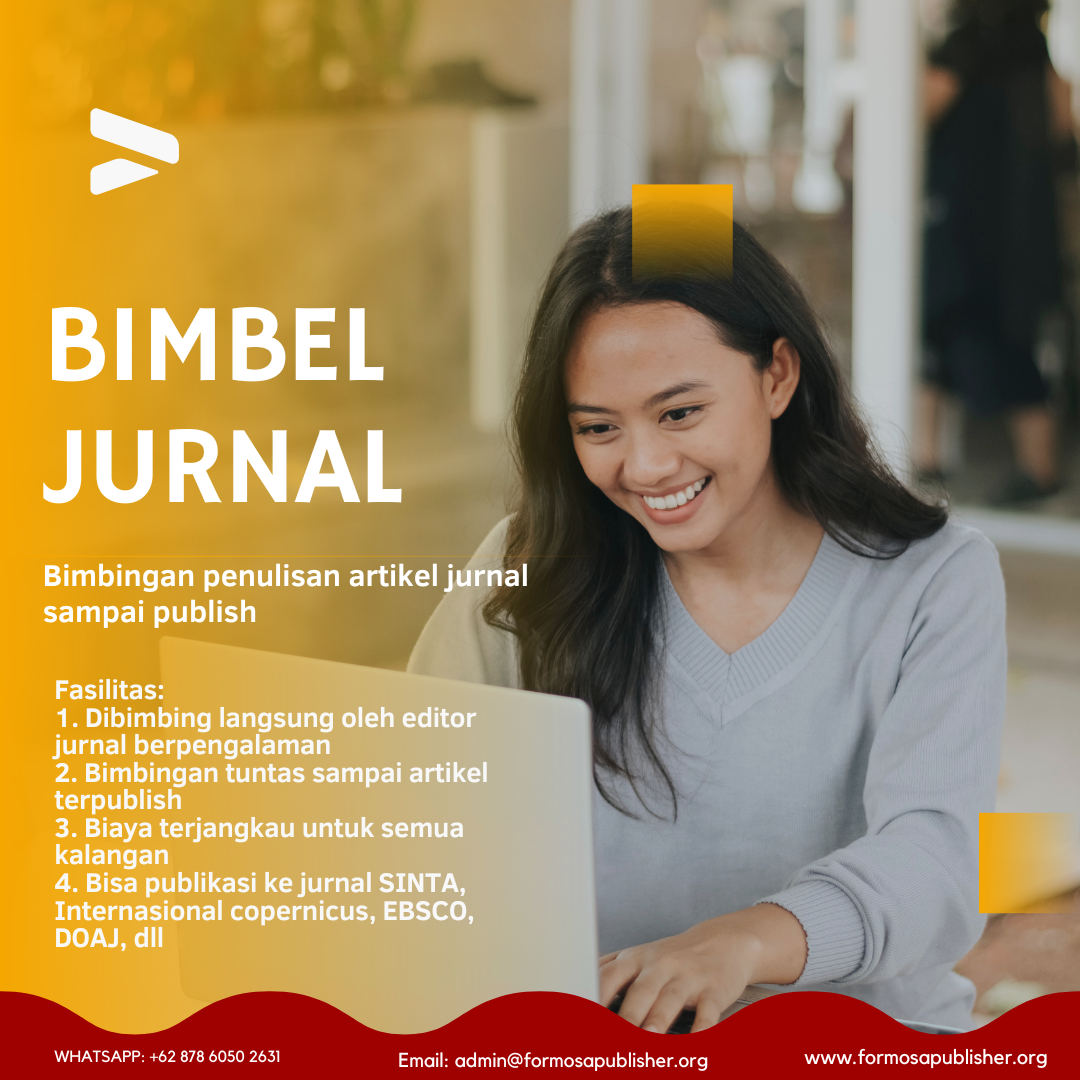Abdurrahman Wahid's Policy Motivation for the Cheng-ho Mosque (Multicultural Da'wah Communication Perspective)
DOI:
https://doi.org/10.55927/mudima.v3i10.6322Keywords:
Motif, Abdurrahman Wahid, Cheng-Ho Mosque, Multicultural Preaching, ToleranceAbstract
This research aims to find a motive that underlies Abdurrahman Wahid's approach to the Cheng-ho Mosque in the context of multicultural da'wah. Cheng-ho Mosque, is a mosque that is quite often located in Indonesia. This mosque attracts attention because of its unique combination of architecture and cultural diversity. The focus of this research is to understand the motivation behind Abdurrahman Wahid's support for this mosque, and how this is reflected in his multicultural da'wah approach. The research method used is qualitative with a literature analysis and literature study approach. Primary data is collected through books, articles, newspapers, historical records, journals, encyclopedias and digital archives to collect data directly related to the figure. Secondary data is obtained from reviewing existing literature by examining previous research on the same subject or figure. Carrying out this literature review can help avoid repeating research that has been done previously and help have in-depth knowledge of Abdurrahman Wahid's thoughts and views on the Cheng-ho mosque. The research results show that Abdurrahman Wahid's motives for the Cheng-ho Mosque are rooted in his beliefs and multicultural approach in spreading Islamic teachings. He views this mosque as a symbol of cultural diversity that can become a bridge to strengthen relations between Muslims and non-Muslim communities in Indonesia. Abdurrahman Wahid sees the potential of the Cheng-ho mosque as a place for interfaith dialogue, spreading the values of tolerance, and developing social harmony. From a multicultural da'wah perspective, Abdurrahman Wahid's approach to the Cheng-ho mosque emphasizes the importance of inclusion and mutual understanding between religious communities. He promotes Islamic teachings that are able to respect cultural diversity and emphasize the values of brotherhood between religious communities. By using the Cheng-ho mosque as a means of da'wah, Abdurrahman Wahid is trying to change the paradigm of preaching from a more exclusive to an inclusive one, so that he can build a more harmonious societ
References
Al Amer HS, Dator WL, Abunab HY, Mari M. Cryotherapy intervention in relieving arteriovenous fistula cannulation-related pain among hemodialysis patients at the King Khalid Hospital, Tabuk, Kingdom of Saudi Arabia. Saudi J Kidney Dis Transpl. 2017;28(5):1050-6. https://doi.org/10.4103/1319-2442.215141
Alzaatreh MY, Abdalrahim MS. Management strategies for pain associated with arteriovenous fistula cannulation: an integrative literature review. Hemodial Int. 2020;24(1):3–11. doi:10.1111/hdi.12803
Arslan DE, Akca NK. Pain following needle insertion into a hemodialysis fistula and influencing factors. Int J Caring Sci. 2018;11(3):1662–1667
Bicego, A., Monseur, J., Collinet, A., Donneau, A. F., Fontaine, R., Libbrecht, D., ... & Vanhaudenhuyse, A. (2021). Complementary treatment comparison for chronic pain management: A randomized longitudinal study. PloS one, 16(8), e0256001.
Collister D, Pyne L, Cunningham J, et al. Multidisciplinary chronic kidney disease clinic practices: a scoping review. Can J Kidney Health Dis.2019;6:2054358119882667. doi:10.1177/2054358119882667
Da Silva O, Rigon E, Corradi Dalazen J, Bissoloti A, Rabelo-Silva E. Pain during arteriovenous fistula cannulation in chronic renal patients on hemodialysis. Open J Nurs. 2016;6(12):1028–1037. doi:10.4236/ojn.2016.612098.
David M. Wark (2020) Hypnosis and end-stage renal disease: Review and treatment, American Journal of Clinical Hypnosis, 63:1, 36-48, DOI: 10.1080/00029157.2020.1748561
Fischer FH, Lewith G, Witt CM, Linde K, von Ammon K, Cardini F, et al. High prevalence but limited evidence in complementary and alternative medicine: guidelines for future research. BMC Complement Altern Med. feb 2014; 14:46. https://doi.org/10.1186/1472-6882-14-46 PMID: 24499316
Goldberg DS, McGee SJ. Pain as a global public health priority. BMC Public Health. oct 2011; 11:770. https://doi.org/10.1186/1471-2458-11-770 PMID: 21978149
Harwood L, Wilson B, Goodman M. Cannulation outcomes of the arteriovenous fistula for hemodialysis: a scoping review. Nephrol Nurs J. 2017;44(5):411–425.
Ibrahim, R., Naim, M., & Premtim, R. (2022). Evaluation of the pain scale during arteriovenous fistula puncture with and without lidocaine gel 2% in patients undergoing haemodialysis in Kosovo. Annals of Medicine and Surgery, 79, 103913.
Ibrahim, M. B., Badawi, S. E. A., & Alameri, R. A. (2022). Assessment of Pain and Anxiety During Arteriovenous Fistula Cannulation Among Hemodialysis Patients: A Cross-Sectional Study in Saudi Arabia. Journal of Multidisciplinary Healthcare, 15, 705.
Kemppainen LM, Kemppainen TT, Reippainen JA, Salmenniemi ST, Vuolanto PH. Use of complementary and alternative medicine in Europe: Health-related and sociodemographic determinants. Scand J Public Health. june 2018; 46(4):448–55. https://doi.org/10.1177/1403494817733869 PMID: 28975853
Miller, C. J., Smith, S. N., & Pugatch, M. (2020). Experimental and quasi-experimental designs in implementation research. Psychiatry Research, 283, 112452.
Murdeshwar
HN, Anjum F. Hemodialysis. In: StatPearls. Treasure Island (FL): StatPearls Publishing; 2021.
O’Hare, A. M., Allon, M., & Kaufman, J. S. (2010, September). Whether and when to refer patients for predialysis AV fistula creation: complex decision making in the face of uncertainty. In Seminars in dialysis (Vol. 23, No. 5, pp. 452-455). Oxford, UK: Blackwell Publishing Ltd.
Palsson, O., Twist, S., & Walker, M. (2019). A national survey of clinical hypnosis views and experiences of the adult population in the united states. International Journal of Clinical and Experimental Hypnosis, 67(4), 428–448. doi:10.1080/00207144.2019.1649538
Potter, P. A., Perry, A. G., Stockert, P. A., & Hall, A. M. (2017). Fundamentals of Nursing. ed.St. Louis, Missouri: Elsevier Mosby
Raja, S. N., Carr, D. B., Cohen, M., Finnerup, N. B., Flor, H., Gibson, S., ... & Vader, K. (2020). The revised International Association for the Study of Pain definition of pain: concepts, challenges, and compromises. Pain. press.
Santos, K. V. G. D., Rocha, M. A., Dantas, J. K. D. S., Araújo, S. C. M. D., Dantas, D. V., & Dantas, R. A. N. (2022). Non-pharmacological analgesia strategies in adult and elderly endovascular procedures: a scoping review. Revista Brasileira de Enfermagem, 75.
Singh, A. (2021). Quasi Experimental Design in Scientific Psychology. Available at SSRN: https://ssrn. com/abstract, 3793568.
Syaripudin, A. (2018). The Effect Of Hynotherapy Technique On The Characteristics Nuasea Of Patients That Achieve Chemotherapy In The Mitra Plumbon Hospital Cirebon. Jurnal Kesehatan Mahardika, 5(2), 14-20.
Taylor, D. A., & Genkov, K. A. (2020). Hypnotherapy for the treatment of persistent pain: A literature review. Journal of the American Psychiatric Nurses Association, 26(2), 157-161.
Treede, R. D. (2018). The International Association for the Study of Pain definition of pain: as valid in 2018 as in 1979, but in need of regularly updated footnotes. Pain reports, 3(2).
Zhao, S., Tian, R., Wu, J., Liu, S., Wang, Y., Wen, M., ... & Ding, B. (2021). A DNA origami-based aptamer nanoarray for potent and reversible anticoagulation in hemodialysis. Nature communications, 12(1), 1-10
Downloads
Published
How to Cite
Issue
Section
License
Copyright (c) 2023 Moch Husnan, Luluk Fikri Zuhriyah

This work is licensed under a Creative Commons Attribution 4.0 International License.































